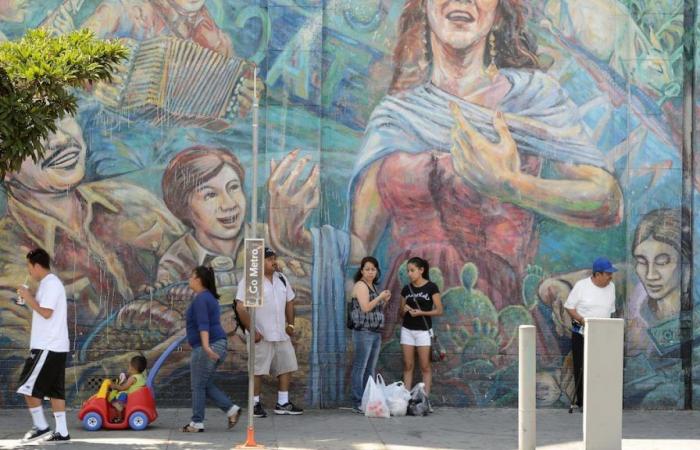The Hispanic population is leading the demographic growth of the United States. Thanks to the increase in birth rates in this group, Latinos are responsible for almost 71% of the total increase in the population in the country. This is shown by the latest report from the Census Bureau, which reveals that of the 1.64 million people who were added to the count in 2023, 1.16 million were Hispanic.
“The Hispanic population is expanding at a substantially faster rate than the non-Hispanic population, primarily due to natural increase — more births than deaths,” Kristie Wilder, a demographer in the Census Bureau’s Population Division, said in the report.
Between 2022 and 2023, there were 722,000 more births than deaths in the Hispanic population, which already reaches 65 million people in the country. Traditionally, Hispanic families have more children than those formed by non-Hispanic citizens. Compared to the surplus of births among Latinos, the non-Hispanic population recorded 217,000 more deaths than births.
“The annual increase of 1.8% [de la población latina] “This contrasts sharply with the 0.2% increase in the non-Hispanic population, whose growth was offset by a decline among non-Hispanic whites, the largest demographic group within the non-Hispanic category and the only one to have experienced population loss,” Wilder said.
One in five residents is Latino
Although non-Hispanic whites remain the largest group in the United States, the rapid growth of the Hispanic population in recent years has made this group, at 19.5%, the second largest, surpassing the African-American community. One in five residents in the United States is Latino.
By state, California (15,760,437), Texas (12,135,690), Florida (6,197,465), and New York (3,873,130) have the largest Hispanic populations. New York, however, is the only state where it has decreased, with 3,375 fewer Latinos in 2023 than in the previous year. In absolute terms, Texas (242,306), Florida (191,373), and California (83,036) had the largest increases. But the largest percentage increase was recorded in North Dakota, which saw its Hispanic population grow by 6.7% or 2,400 residents.
73% of metropolitan areas saw population growth, led in most of them by Hispanics. In 11 of them, the increase in Latino residents offset the decline in the non-Hispanic population.
The Census Bureau report shows, however, that, although it has continued to grow, the increase in the Latino population of 1.8% between 2022 and 2023 was less than that recorded in previous decades: 2.0% between 2012 and 2013, and 3.7% between 2002 and 2003.
In addition to the increase in birth rates, immigration also contributed to the increase in the Hispanic population; last year, 437,000 new Latino migrants entered the country. Likewise, the arrival of almost 700,000 migrants was responsible for the positive growth of the group of non-Hispanic citizens, despite the negative balance between births and deaths. Thus, the non-Hispanic population of the country increased by just under half a million, reaching 269.7 million in 2023.
The increasing importance of migrants in sustaining the United States economy, due to the aging of the population, has been highlighted in recent studies. A report published by Brookings shows that in the coming years seven million migrants will be required to cover the financial needs of the Social Security and Medicare systems due to the retirement of the generation of the baby boomers.
73% of metropolitan areas had a population increase, led in most of them by Hispanics. In 11 of them, the increase in Latino residents offset the drop in the non-Hispanic population. Panamanian population (58%) of the country’s total population, but it has fallen 0.2% (461,612) compared to 2022. With almost 630,000 deaths more than births, natural decline was the main reason for the decline. In contrast, the other non-Hispanic racial groups experienced population increases in 2023: two or more races, 2.4%; Asians, 2.3%; native Hawaiians and other Pacific Islanders, 1.7%; African American, 0.6%; and American Indians and Alaska Natives, 0.3%.pana.


